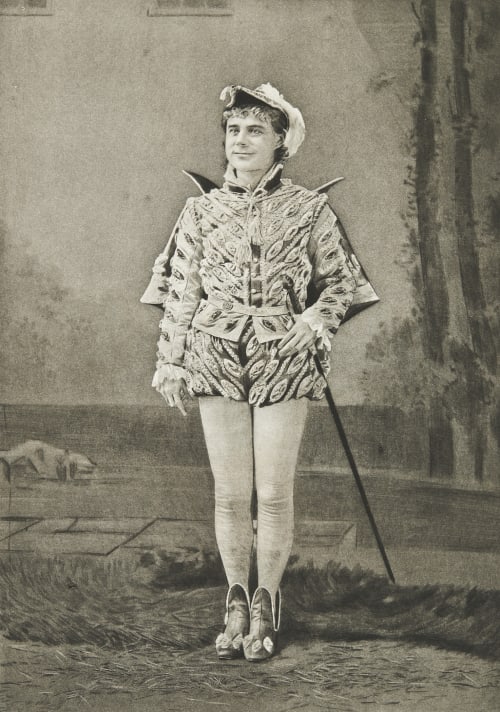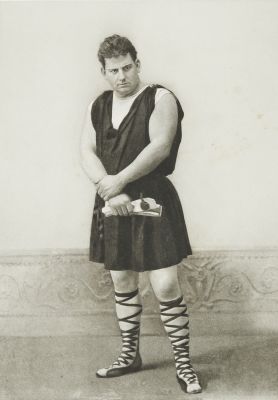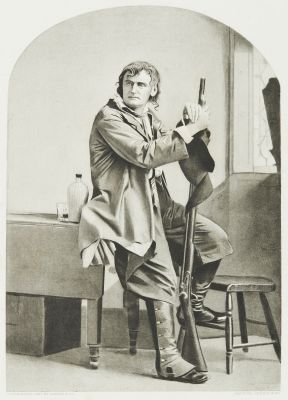
Title
Mr. Stuart Robson as SlenderArtist
UnknownPublication
The Stage and Its Stars, Past and PresentDate
1884 printProcess
PhotogravureAtelier
Gebbie & Husson Co.Image Size
17.6 x 25 cmSheet Size
30 x 34 cm
The photogravures in The Stage and Its Stars by Gebbie & Husson Co. approach an intriguing equal balance of photography and engraving, exemplifying the hybridity of the photogravure process.
George Gebbie was a Philadelphia publisher who produced art books with Photogravures printed in the United States from plates made by Goupil in Paris. In 1887, Gebbie, in partnership with Husson, began to produce their own photogravure plates using the Goupil method that they modified for their use. Mr. Husson stated "Without using the same means [as Goupil], but the same basis, we obtain the same results today, and the success of the Goupil process and of ours comes of the strength of the growing copper plate by electricity and the grain— which is not obtained by any other biting acid." The electrotyping of the printing plate took between 15 and 25 days to complete. (Public Ledger, 1888) [1]
From this portfolio’s prospectus, The work will contain in all 112 steel engravings, part by etching and part by photogravure, and about 500 engravings on wood. it will be issued in twenty-eight parts at one dollar each; each part will contain 4 steel plates; each plate will be accompanied by descriptive text, and each number will contain at least 8 pages of illustrated biography of the actors and history of the Stage. One number will be issued monthly until the whole is completed.
Portrait of Mr Stuart Robson as Slender in Act I, Scene 1 of Merry Wives of Windsor. Photogravure by Gebbie & Co.
References
[1] Hanson, David Checklist of photomechanical processes and printing 1825-1910, 2017 p. 57




